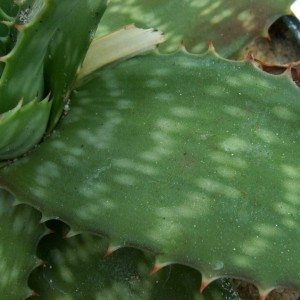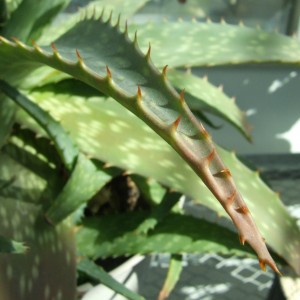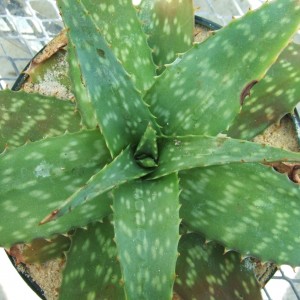Aloe vera
| Description | Aloe vera (“True aloe”) is a succulent with broad, fleshy, leaves that have serrated edges. The leaves may or may not have spots; the spotted variety is referred to as Aloe vera var. chinensis. It blooms with a many yellow to orange flowers on a very tall stalk, usually about 3 feet high. |
|---|---|
| Area | It is thought that North Africa is the original habitat of aloe vera, but widespread cultivation makes it difficult to tell. It is well adapted to arid climates, like all succulents. |
| Special Characteristics |
Aloe vera contains a myriad of medicinal benefits, for jut about every system of the body. It contains about 150 estimated nutritional ingredients, including vitamins, minerals, all 8 essential amino acids (and more nonessential ones), and many antioxidant and anti-inflammatory components. Aloe vera has been shown to be very effective at regulating blood glucose levels in diabetics and blood lipid levels in hyperlipidemia patients. It is also very popular in dermatological medicines, as the gel of the inner leaf has a great soothing and cooling property. Disclaimer: Never use plants for medicinal purposes without consulting a medical professional. |
| Trivia |
Aloe vera leaves, though highly medicinal, produce an irritant called aloin just under the surface of the leaf. Most aloe vera products have the aloin removed as the FDA bans its use. Aloe vera can be made into yogurts and various desserts for easy consumption. The aloe genus forms a symbiosis called arbuscular mycorrhiza, an adaptiation in which a species of fungus grows in the root of the and facilitates extraction of nutrients from the soil, such as phosphorus. |
 |
 |
|
| Aloe vera’s leaves grow in a rosette pattern. | Some varieties of Aloe vera have spots. | Aloe vera’s leaves are tough and well-protected with “teeth”. |

